Blog
July 20th, 2011
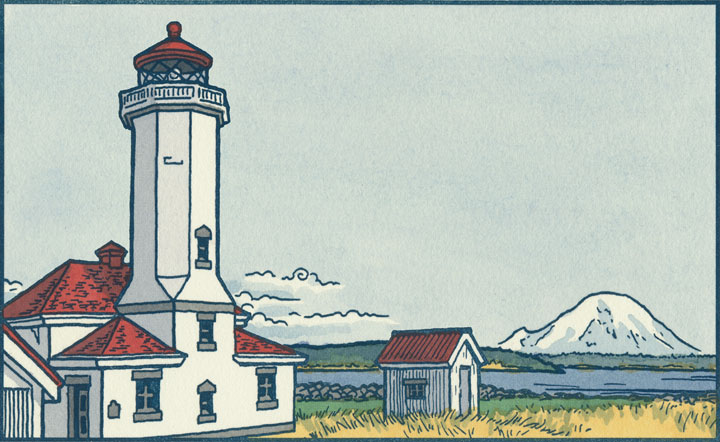
As you may have already noticed, I kind of have a thing for lighthouses.

It’s probably no surprise they’ve cropped up in my work lately, since my corner of the world is fair teeming with them.

But I even find myself sneaking them into other projects, even when it’s not strictly necessary.

So you can imagine my excitement on my trip back East,
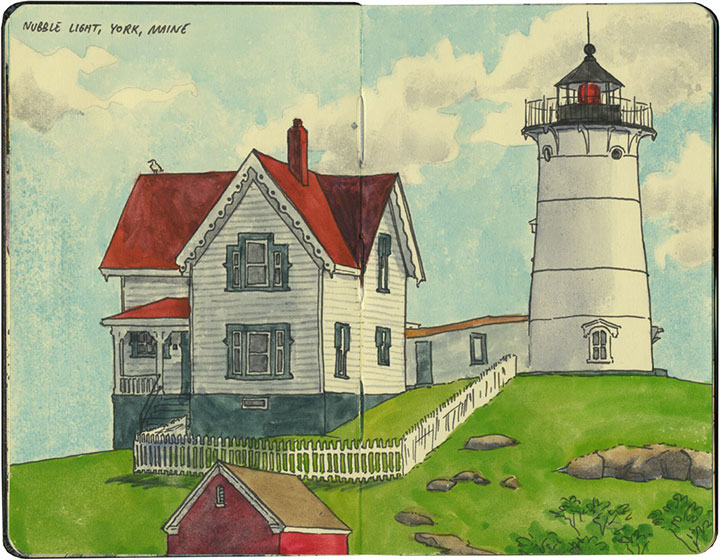
when there seemed to be a beacon
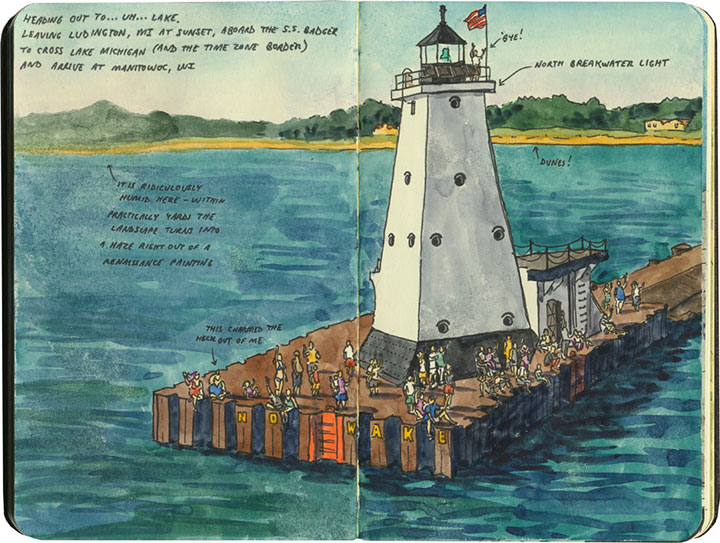
around every corner.
Best keep a sharp eye out—
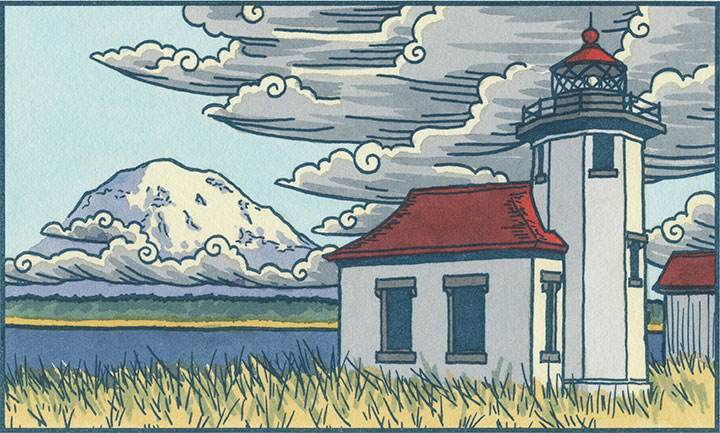
I have a feeling there’ll be more lighthouses popping up here in future.
July 13th, 2011

My next stop on the trip was one I would have made anyway, just for the sheer natural beauty. But what really happened is that I let my inner movie geek take over. Film buffs: recognize that location?
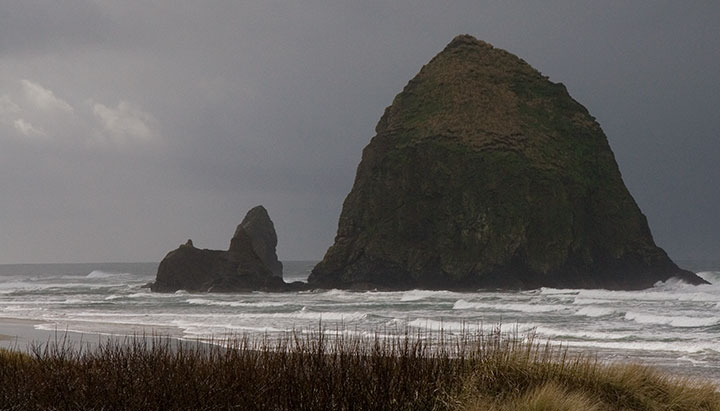
Ah, Cannon Beach. Home of the iconic Haystack Rock and filming location for The Goonies and a whole host of other movies. I would have loved to stay longer, but the only thing likely to roll in that morning wasn’t a pirate ship—
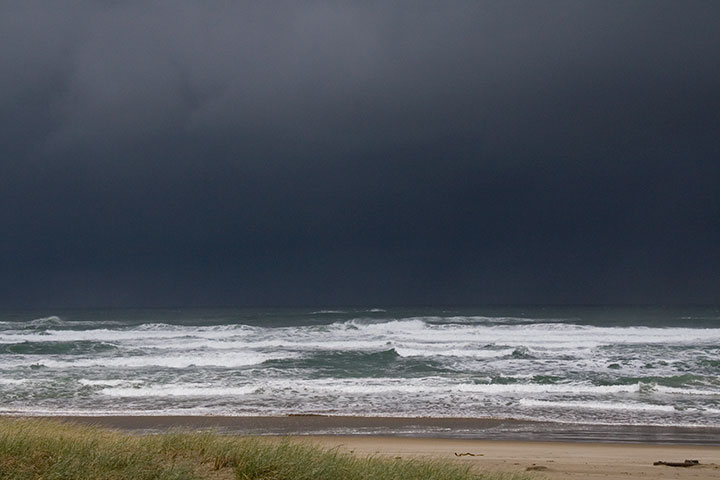
—it was another storm.
I finally managed to tear my eyes from the ominous horizon—less gaping, more fleeing!—but as I turned to walk back to the car, I happened to glance northward:
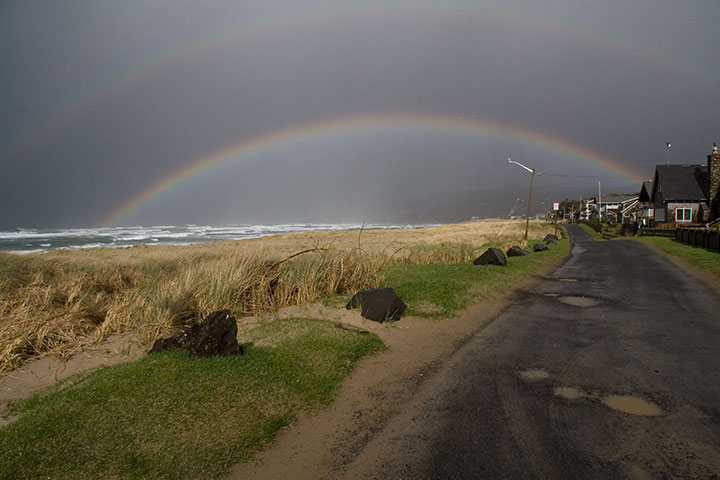
The moment was more like an instant; there was just enough time to let the shutter fly before the light disappeared.
As the first sheet of rain reached me, I jumped in the car and got the heck out of there.
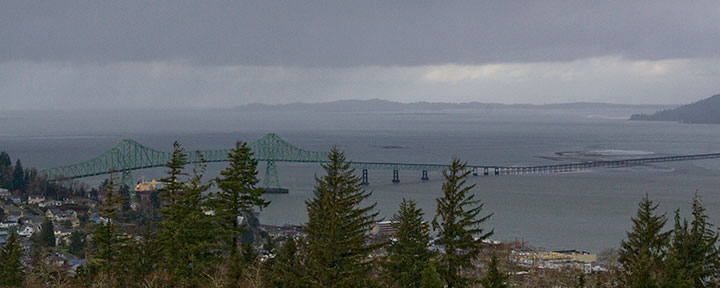
At last I was finally back on my mental map, with just a sliver of Oregon remaining. Within minutes I was perched at the summit of my favorite place to watch the clouds, where the weather is always changing: Astoria.
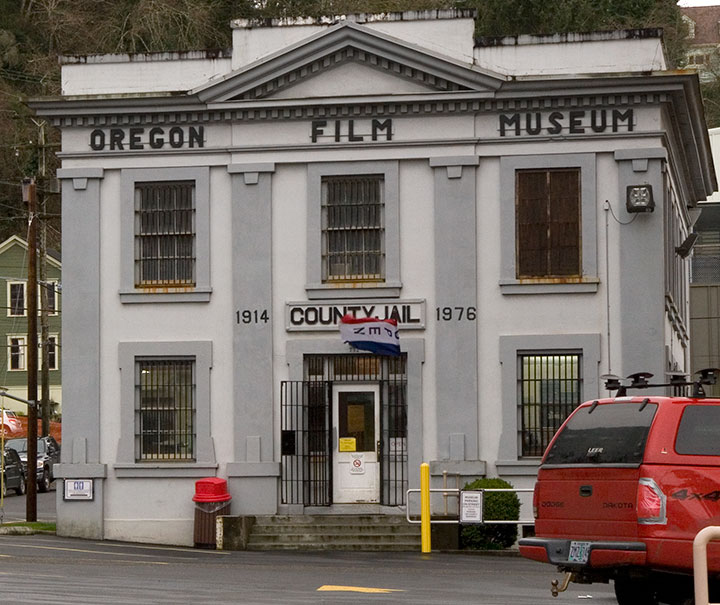
Here, I set about finishing what I started the last time I was in town. Without a detailed map or internet access to tell me where to go, all I could do was wander around. But that’s the best way to explore a place like Astoria—and I found what I was searching for anyway.
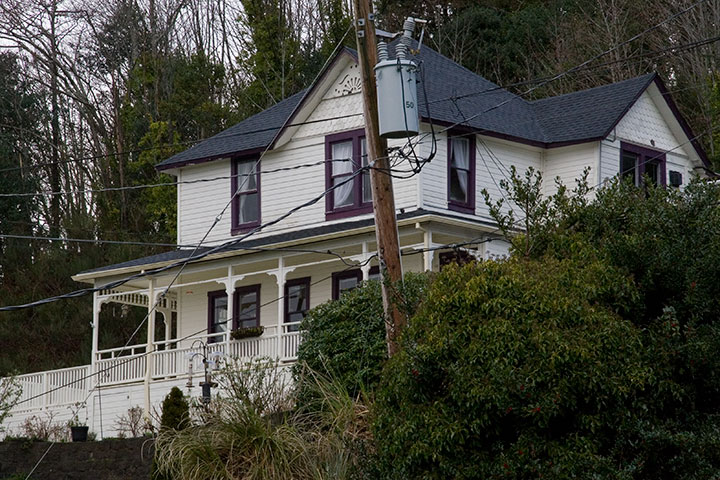
Look familiar?
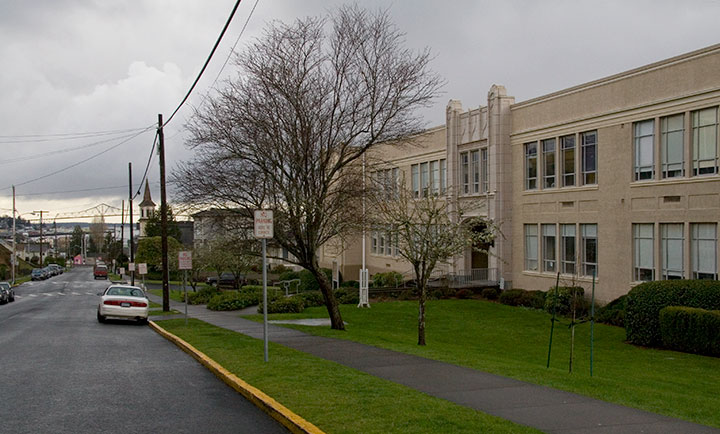
Or how about this place? (Hint: “It’s not a tumor!”)
Even if I hadn’t been location scouting, I had my hands full with a beautiful panorama around every corner. I just love the view of the bridge from here.
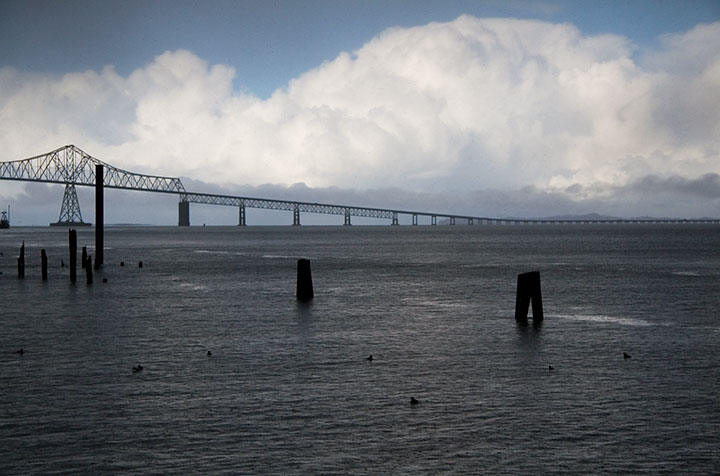
But staring into the mouth of the mighty Columbia, just as the rain turned into a heavy snow squall, reminded me that home was still many miles away—and that I was hoping to get there before dark.
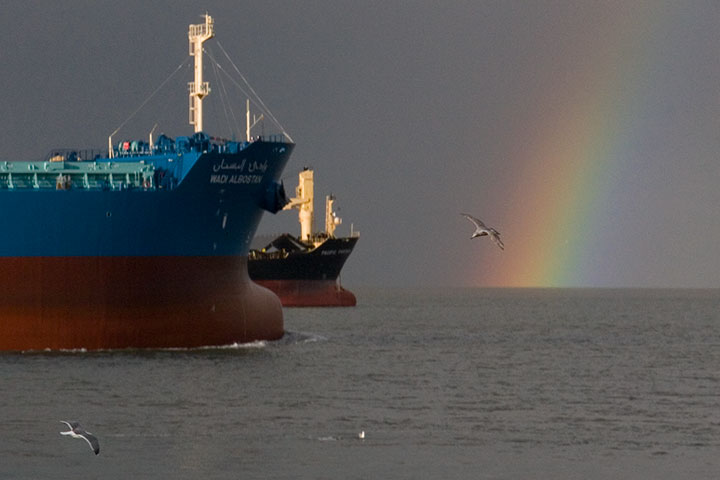
There was just enough time for one final rainbow,
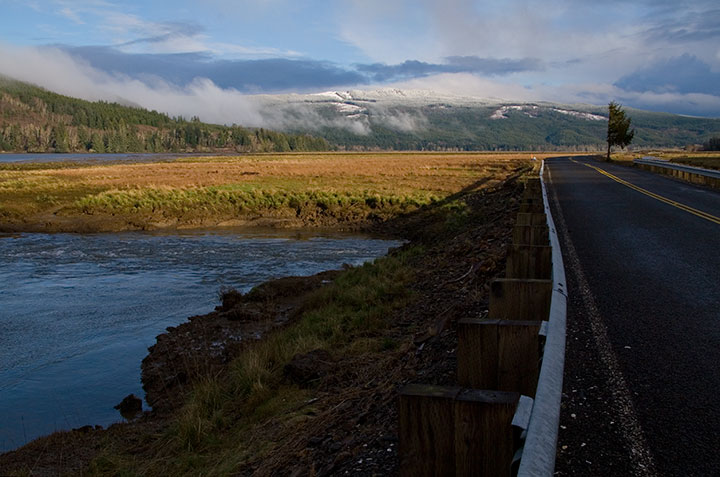
and then I embarked on the last lonely stretch of empty road.
As I pulled over for my last glimpse of the Pacific, I realized that I’d come almost exactly 1000 miles along the coast. Even with six days spent on the road, those miles flashed by entirely too quickly. But then I remembered that I still had the southern half of Highway One left to explore—and the promise of a whole lot of meandering, some day, to get there.
Sounds like a plan.
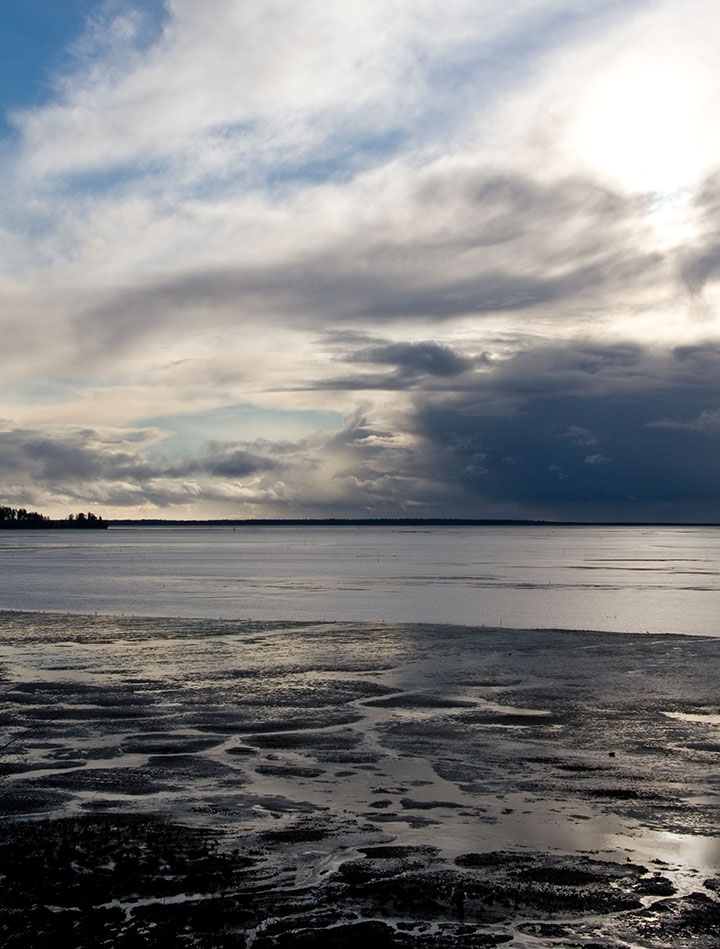
July 7th, 2011
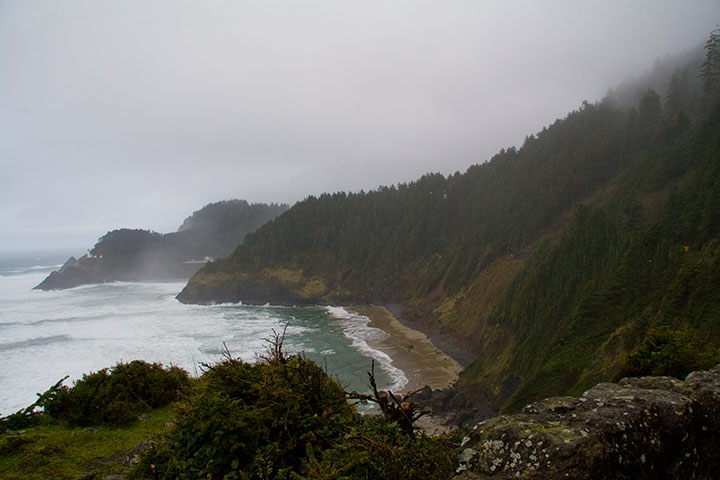
My lucky good weather held out until I hit the Oregon border. And then the storm hit.
It poured. I mean, absolutely cats and dogs.
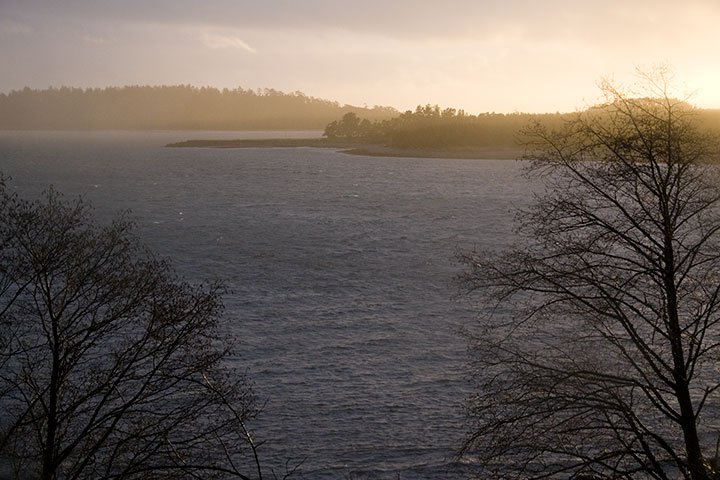
Once in awhile it let up enough to let a hint of sunshine through,
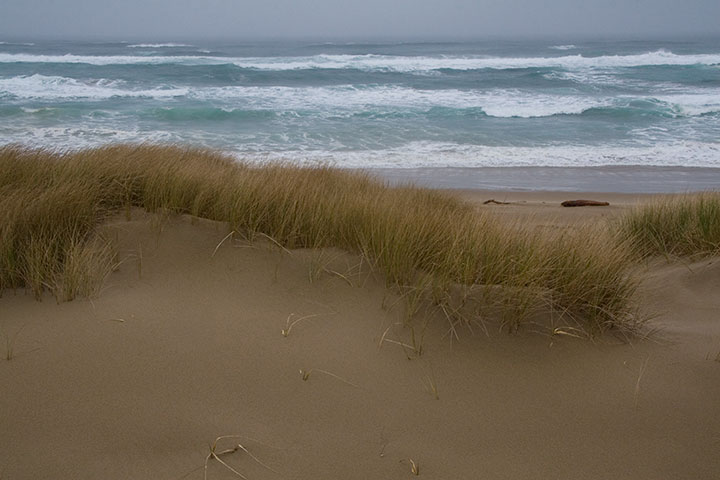
but then the shower curtains would roll back in a moment later.

Sometimes the weather made me laugh out loud. Whenever I’d step out of the car to snap a photo, I’d be buffeted by gale-force winds, and then an invisible person would throw a gallon-sized bucket of icy water right in my face. (Didn’t need coffee to stay awake that day…)
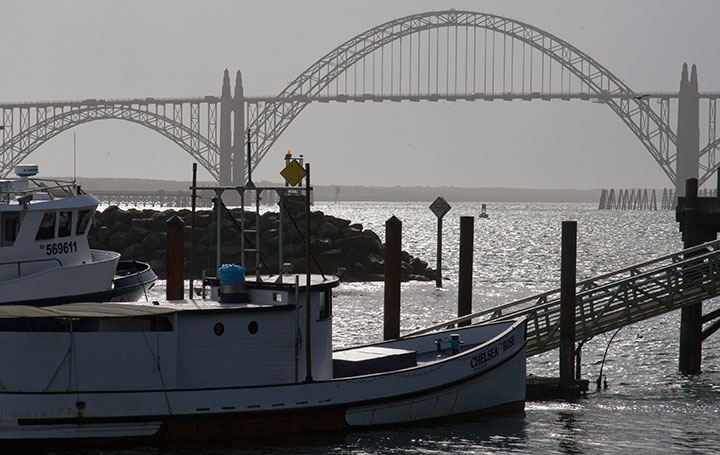
And somehow, it seemed like the quintessential Oregon to me. I think for my maiden voyage up the coast, a monsoon was the appropriate setting; it’s hard to imagine the place in the sun.
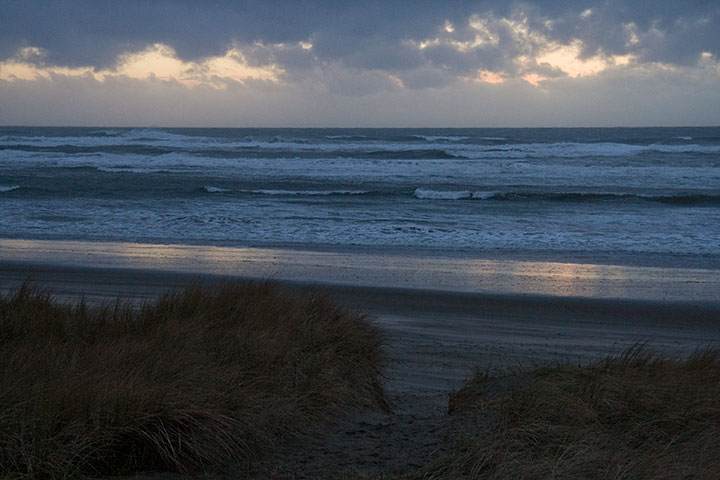
And at the end of the day, I could watch the storm rage and crash from the cozy comfort of a beachfront room. Then I sipped a mug of hot tea, and just listened to the roar of the waves.
March 16th, 2011
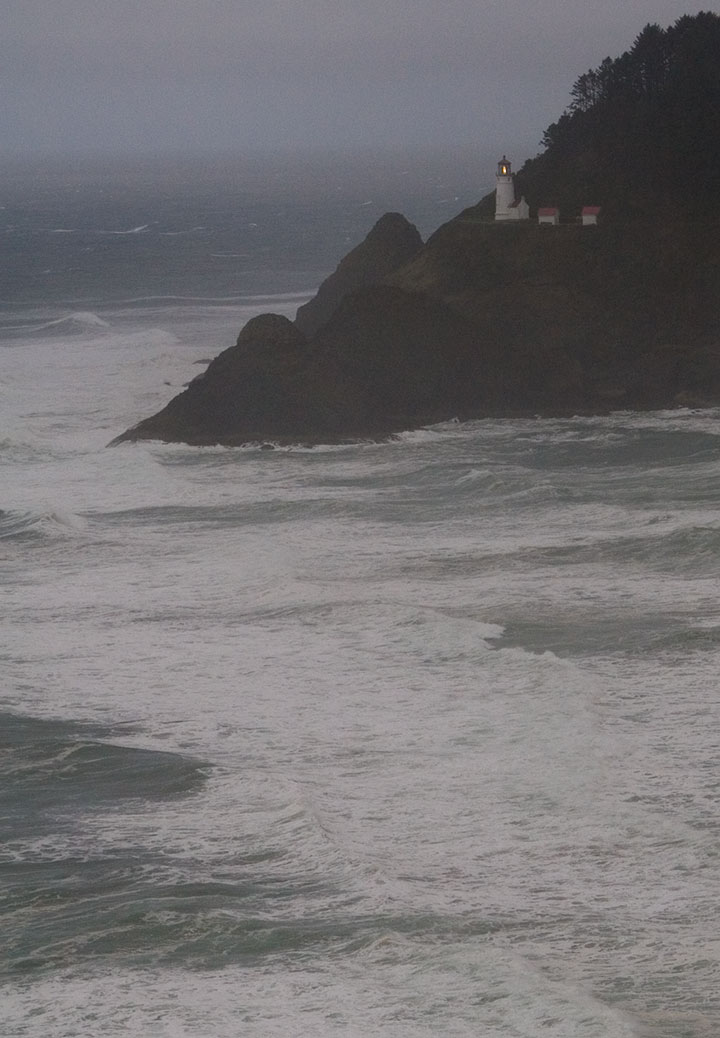
Not long ago I stood where the ripple of a far-away tragedy would soon wash ashore—just as we will send the Pacific rippling back westward when—not if—our time comes.
We received the echo of Japan’s catastrophe like the other end of a tin-can walkie-talkie, string pulled taut. This time the waves are faint at our end of the cable, but the distress call is loud and clear.
It’s a one-way game of telephone. Operator? There is no ripple to relay back along the string. No words of comfort to speak into the mouthpiece. So we send out a beacon instead—and hope the message reaches the far shore.
On our coast, and in our hearts, we’re leaving a light on for Japan.
December 13th, 2010
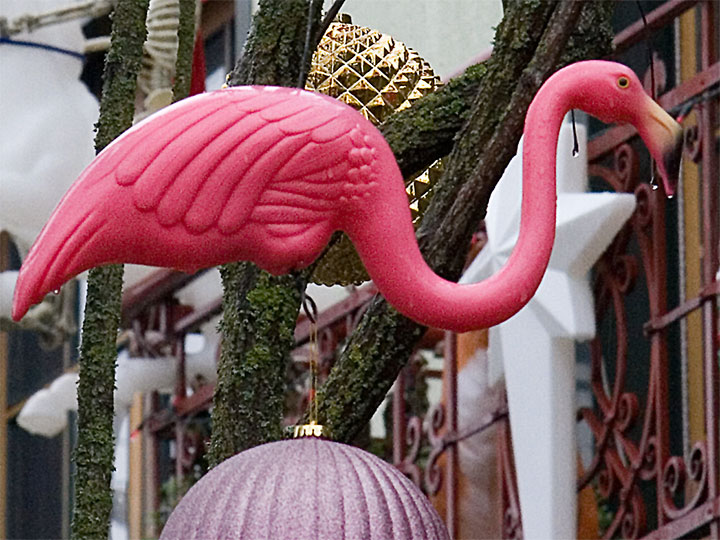
One of the nerdy things I love most in the world is “collecting” regional nicknames for weather systems. I’ve lived in a lot of different places, and have first-hand experience with such things as the Nor’easter, the Albuquerque Low, the Alberta Clipper, and Blood Rain (which, I’ll admit, is as freaky as the name; watching rust-colored droplets fall from the sky and stain every surface—including you—is a disturbing experience).
Here we get the occasional visit from the Pineapple Express—a holiday guest from the South Pacific that overstays its welcome and eats everything in your fridge. And it thanks you with the gift of a warm bath—a gift that keeps on giving: namely, torrential rains, washed-out roads and rails, snowmelt at all but the very highest elevations, and areas of flooding which include, right at this very moment, our basement. (Not to worry; for us, at least, the rain trickles in, gathers in an interesting map of puddles, and trickles back out again when the storm subsides. And for all the well-meaning people who offer us unsolicited remodeling advice, it serves as an excellent illustration of our resolve never to have a finished basement.)
Anyway, while I concede that it made the drive more … er, interesting, the Pineapple Express served as an oddly fitting companion on my trip to Portland yesterday.

For one thing, it gave sudden and perfect context to one hilarious interpretation of a Christmas tree.
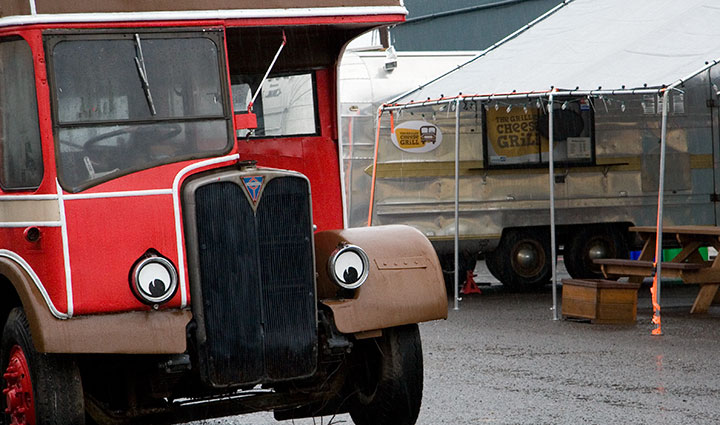
It made the bright spots glow—
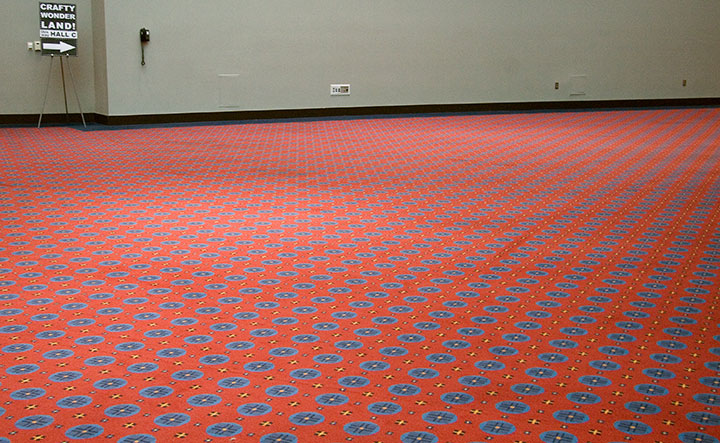
and turned even the most nauseating corporate decor into a sea of color.

It got the old mental wheels turning by inviting me indoors, from a dose of crafty goodness,

to an entire museum devoted to another kind of craftiness.
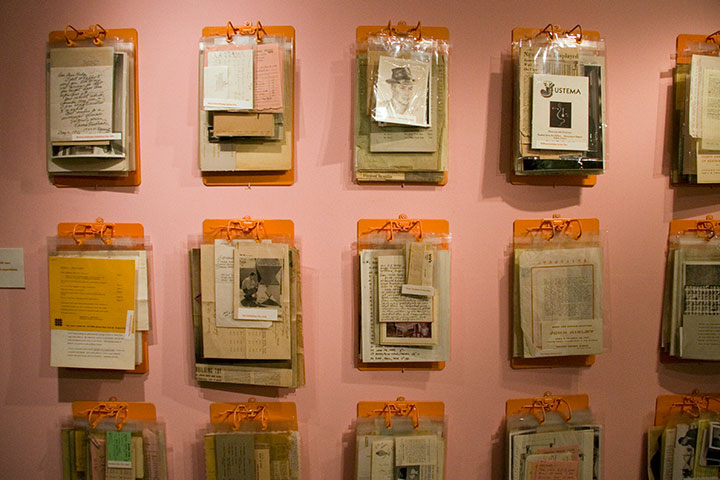
And with nothing but a soggy hike waiting outside, it inspired me to take my time and have a good, long look at what I found.
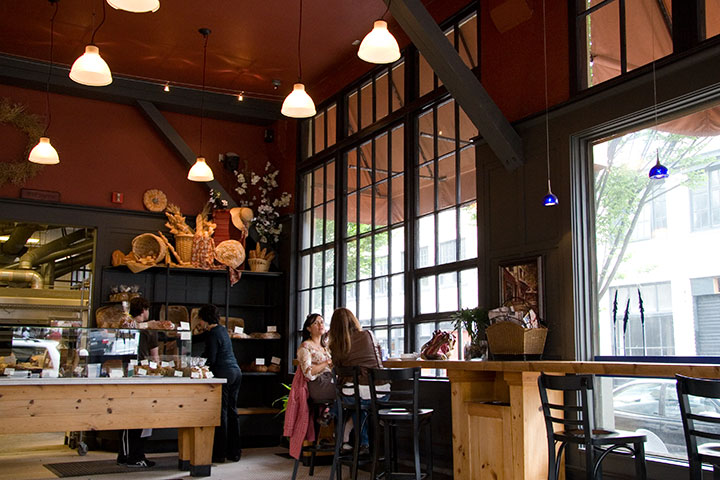
It encouraged me to visit a favorite bakery—
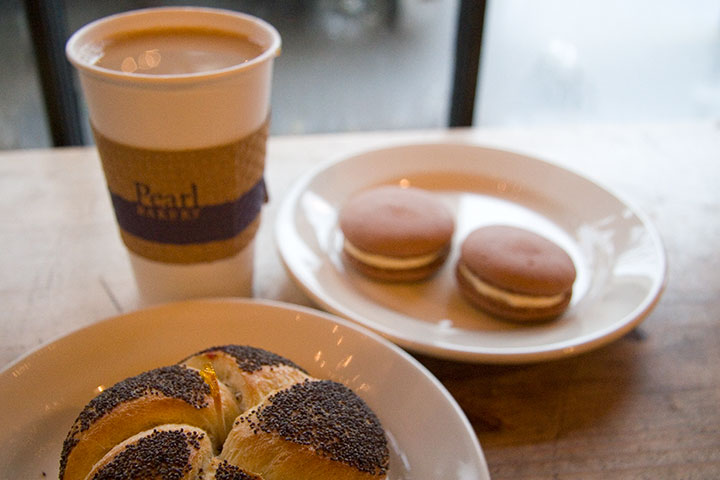
—and warm up over a well-rounded lunch (sorry).
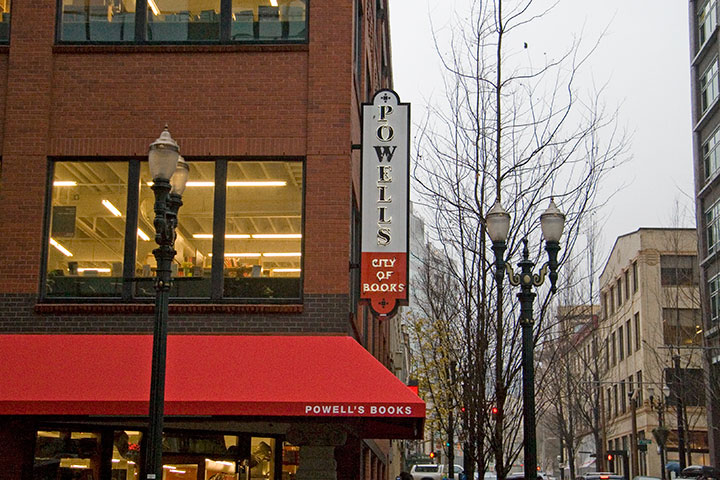
It gave me an excuse to duck into the best bookstore in the entire universe.
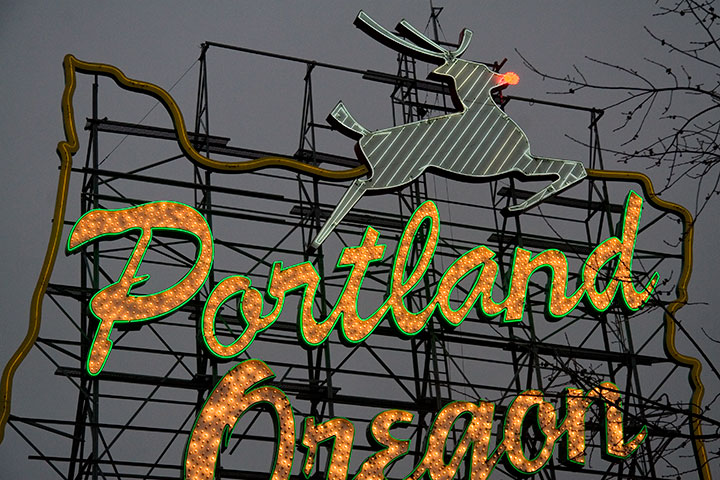
And just as daylight waned, it helped a certain somebody’s nose glow oh-so-bright.
Oh, and then, as I walked back to my car for the drive home, it made this song pop into my head. After all, paddling home in a canoe might have been a little more efficient!
October 4th, 2010
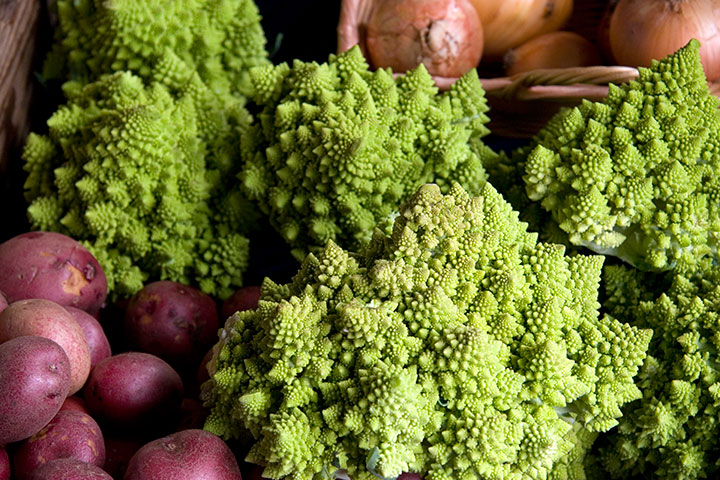
Somehow I’ve managed to tear myself away from the massive pile of drawings a couple of times in the past two weeks—once for a quick trip to the wonderful Olympia Farmers Market to pick up a few things. (Look, fractal geometry!)

Okay, maybe “few” is stretching the truth a bit, since one of those items was fifty pounds of organic romas, destined for tomato sauce. These babies are a month late, and we’re lucky to have them at all. It’s been a dismal summer for tomato growers here—but hey, it’s nice to have that one last bit of summer when you can get it.

The other time was for a little taste of the winter to come—at the Oregon Flock & Fiber Festival. The place had me dreaming of winter silence and warm, woolly sweaters.
Maybe if we hurry up and can those tomatoes, sweater weather will come faster!
July 17th, 2010
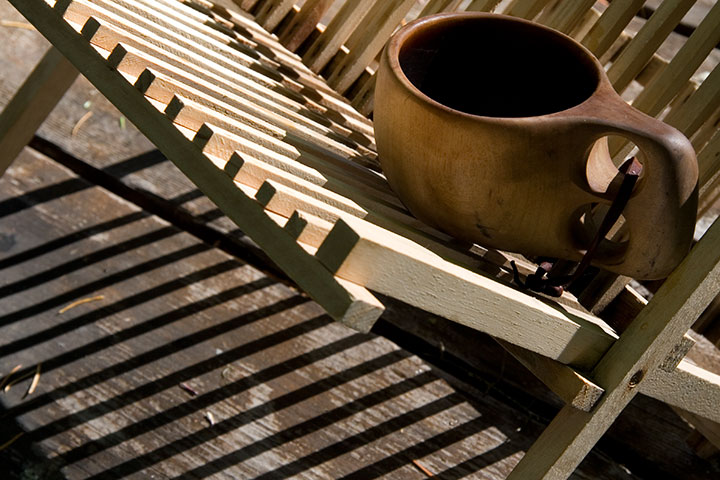
The second part of my little stolen holiday was a little more ambitious: a four-night camping trip with the Tailor in southern Oregon. It was just what the doctor ordered—the perfect prescription for recharging the soul.

We camped in the Rogue River National Forest, in a grove of hemlocks and blooming dogwoods, just downstream from this:
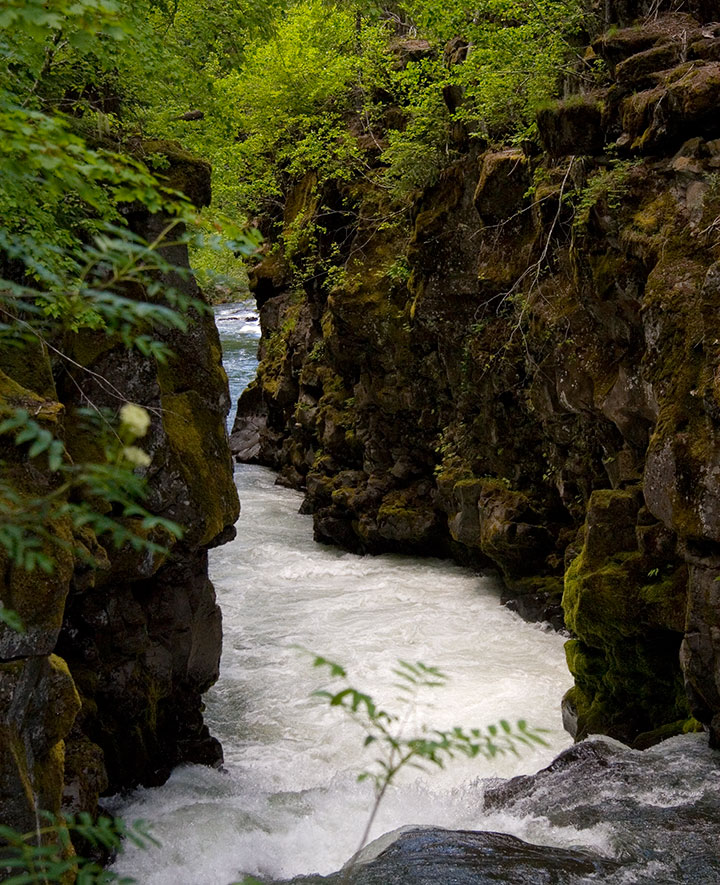
The Rogue is so beautiful that we could have spent the whole trip exploring its banks. Well, if we hadn’t had another destination in mind, that is:
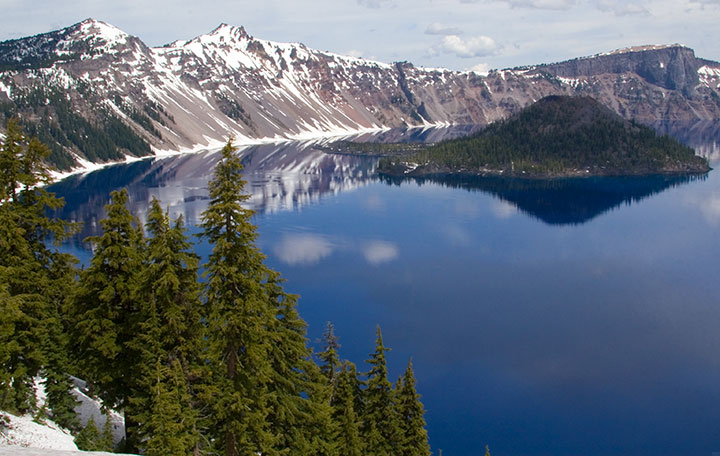
Crater Lake National Park. One of the deepest, clearest lakes in the world, Crater Lake was formed 7,700 years ago by the collapse of Mt. Mazama, after an explosion more than forty times the size of the 1980 eruption of Mt. St. Helens.
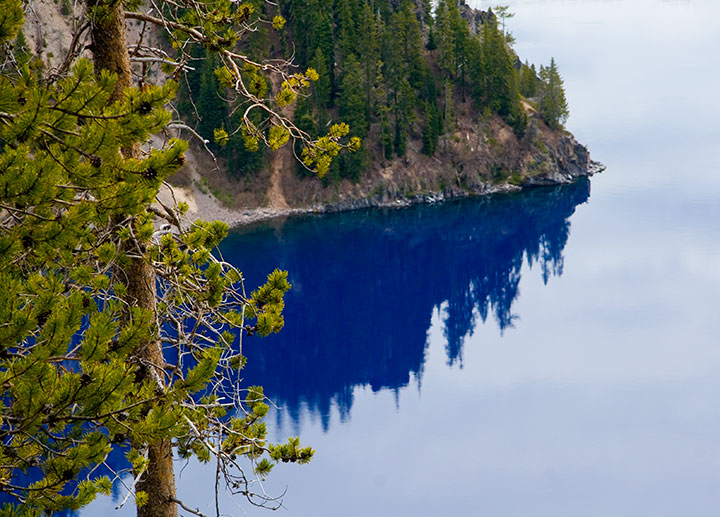
When a group of prospectors stumbled upon it in 1853, and thus became the first white folks to lay eyes on it, they named it Deep Blue Lake. Heh. You can tell they worked hard to come up with that one. Well, at least it’s descriptive.
And accurate. The lake is so impossibly blue because of its depth; when the sun’s rays refract upon hitting the water, red and green light are absorbed in the depths, while only the blue light (which has a shorter wavelength) reflects back to the surface. So the lake is blue even on a cloudy day—as you can see.
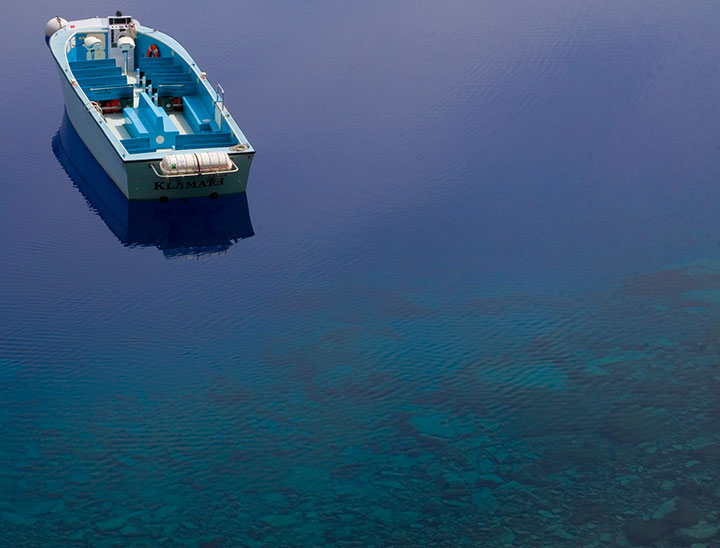
We were a week too early for the boat tours to open for the season, but we hiked down to the water anyway. The rangers like to say that the trail is “one mile down, ten miles back up” (it’s funny because it’s true. Oy.), but the experience is well worth the huffing and puffing. Next time I’ll bring bug spray, though. Note to self.
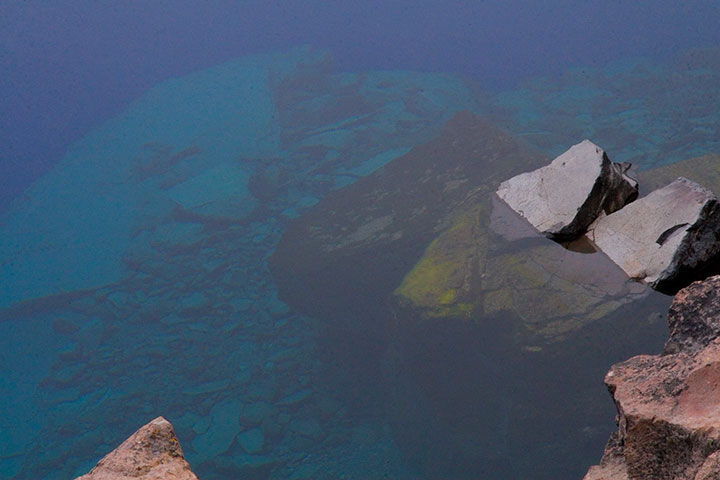
Did I mention that it’s blue? And deep? Maybe those prospectors were onto something.
The photo above doesn’t come close to doing it justice (none of my photos do), but the sheer depth and clarity of Crater Lake was mind-boggling. It’s impossible to tell how deep the rocks in the upper left corner of the photo are, but according to the topo map in front of me, it’s quite a ways down. Because there are no streams in or out of Crater Lake, there’s nothing to muddy or disturb the water—objects are visible nearly 150 feet down. Deep Blue indeed.
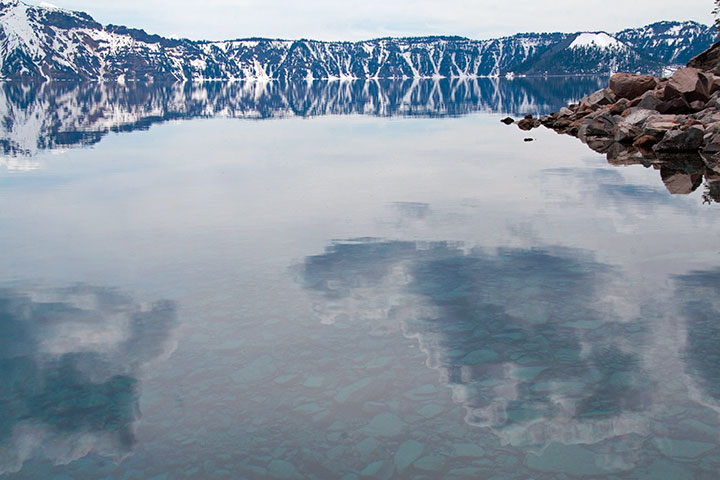
The thing that really got to me was the fact that the lake was both a bottomless pit and a perfectly-flat mirror, depending on which way you looked at it. That’s probably why this is my favorite photo of the trip—somehow the camera managed to look at things both ways.
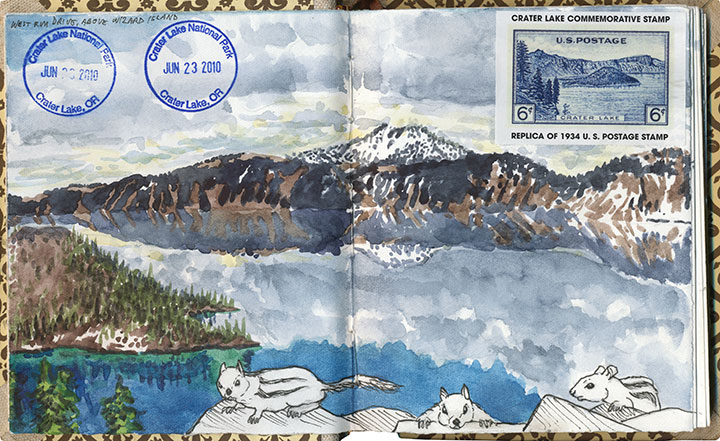
I think I must have been trying for the same kind of perspective with this drawing—and with far less success, I’m afraid. My brain broke when I tried to analyze the thing graphically. Ah, well. (The ground squirrels were fun, though.)
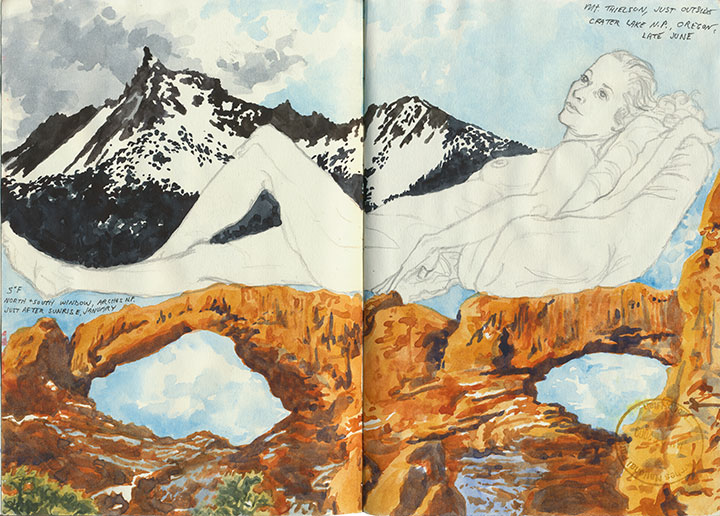
This one worked out a lot better—and it didn’t hurt that the figure and desert drawings were already there to help things along.

Speaking of deserts, we also saw a whole lot of barren landscapes to balance out all this snow and water. For one thing, we drove down and back on the eastern (the arid leeward) side of the Cascades. For another, there are places where all this ancient volcanic destruction still looks like it happened last year. This is the Pumice Desert, on the north side of the National Park.
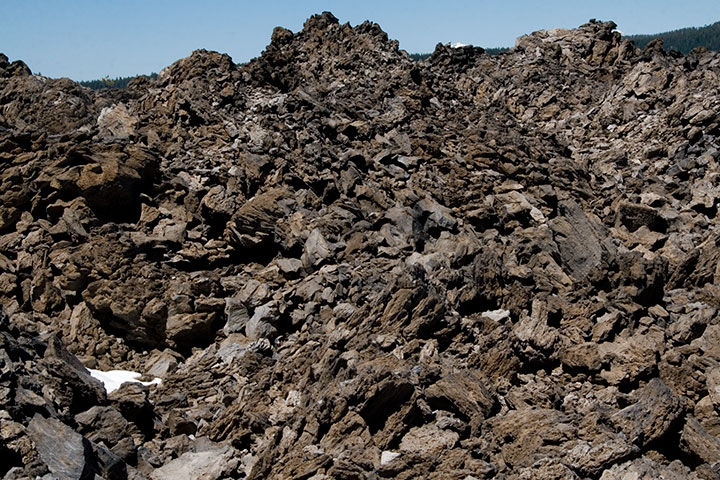
And this is something else again. Now, I loved everything we’d seen at the Park, but my absolute favorite part of the trip was this place, which made for a side trip on the way home. This is just south of the Newberry Caldera, another collapsed volcano formed in precisely the same way as Crater Lake, but on a much smaller scale. A trail winds up and through the rock-pile hills—a landscape that seems plucked from the surface of the Moon.
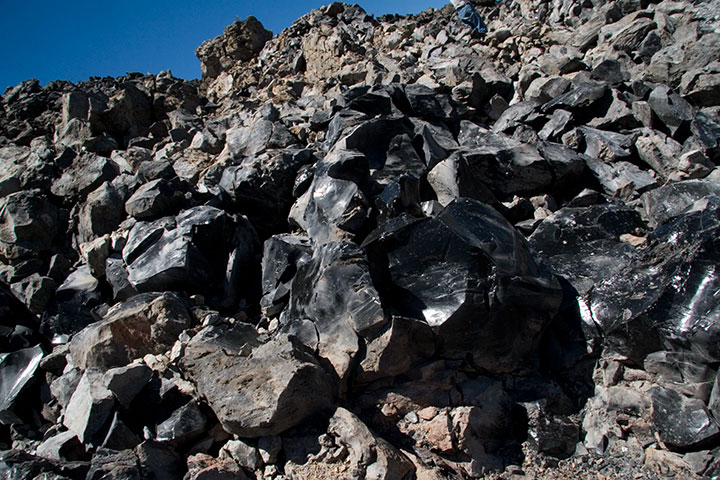
If you step closer, however, you’ll see the light glinting off of each rock and pooling in every crevice. In full sunlight the entire hillside sparkles like a gigantic, blinding treasure hoard.
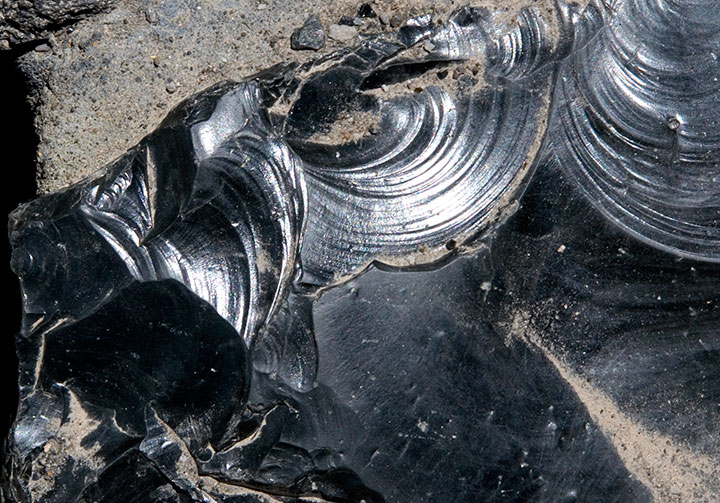
The rocks shine because they’re not rocks—they’re glass. This is obsidian, a natural glass formed when lava cools rapidly without crystallizing. Besides being gorgeous and just about the coolest thing ever, obsidian is extremely useful as a surgical tool. Obsidian scalpels can be sharpened to a near-microscopic edge (because of the not-forming-crystals thing), and the incisions they make produce narrower scars than steel scalpels do. Neat, huh? Anyway, obsidian flows of this size are quite rare, so if you get the chance to walk through one—take it.
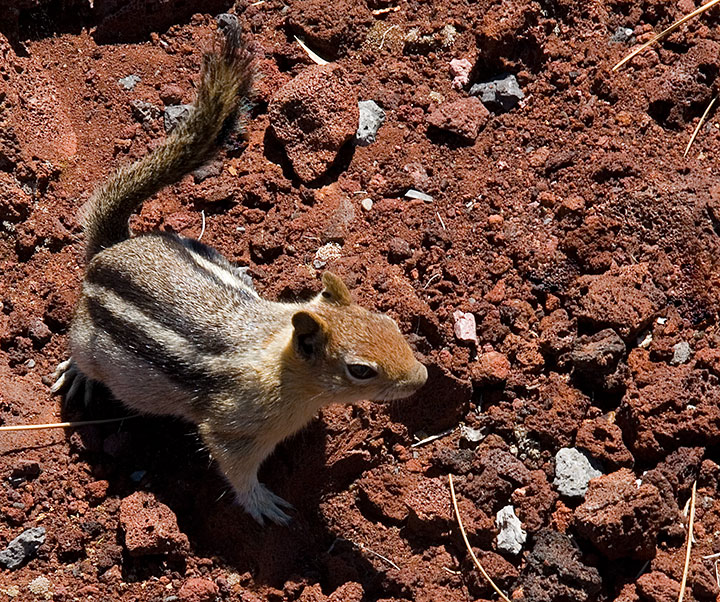
I could have stayed all day with the obsidian (which, by the way, is called the Big Obsidian Flow, a name that gives Deep Blue Lake a run for its money), but we were still several hours from home (we figured we’d have to spend the first hour stepping carefully around all the ground squirrels that had appeared at our feet), and we still had one more stop to make:
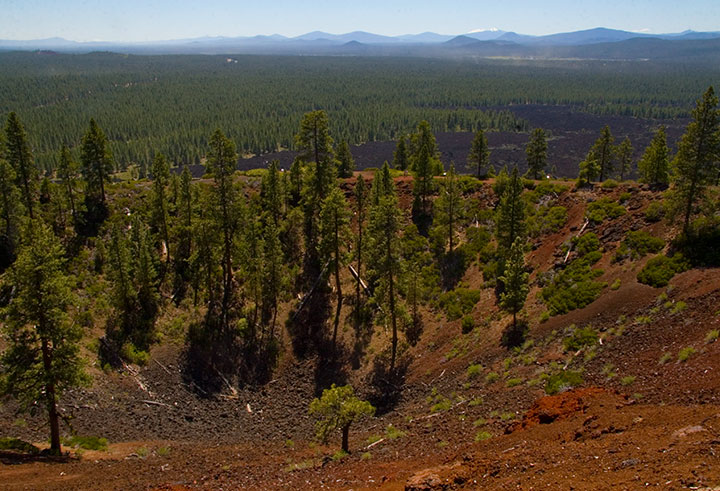
Lava Butte, from which it was possible to see pretty much every darn volcano in Oregon, and even Mt. Adams in Washington. I won’t bore you with the 200 other photos I shot from up there, but let’s just say I was in suitable awe.
Oh, and for the record? All of these volcanoes are still active. How freaky is that? Or maybe it isn’t, and I just have volcanoes on the brain, but I think it’s freaky.
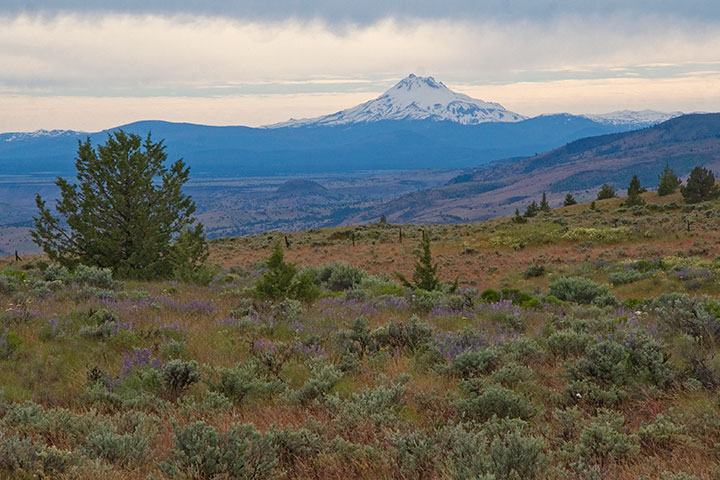
I lost count of all the volcanoes we spied, but the rest of the numbers were easy to tally:
Five glorious days.
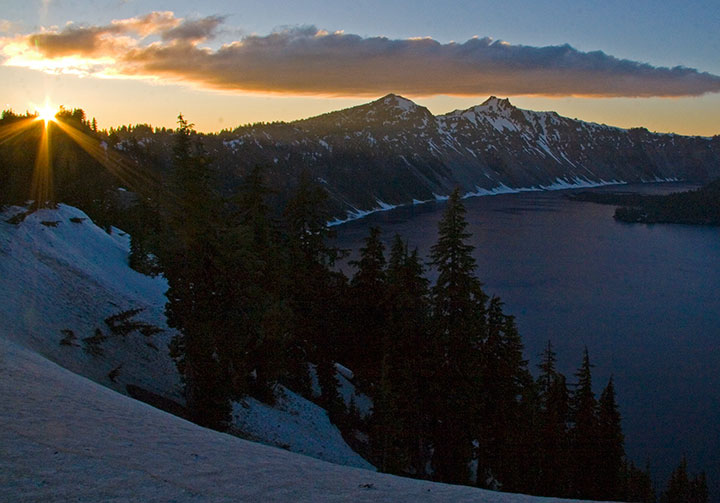
Five breathtaking sunsets.
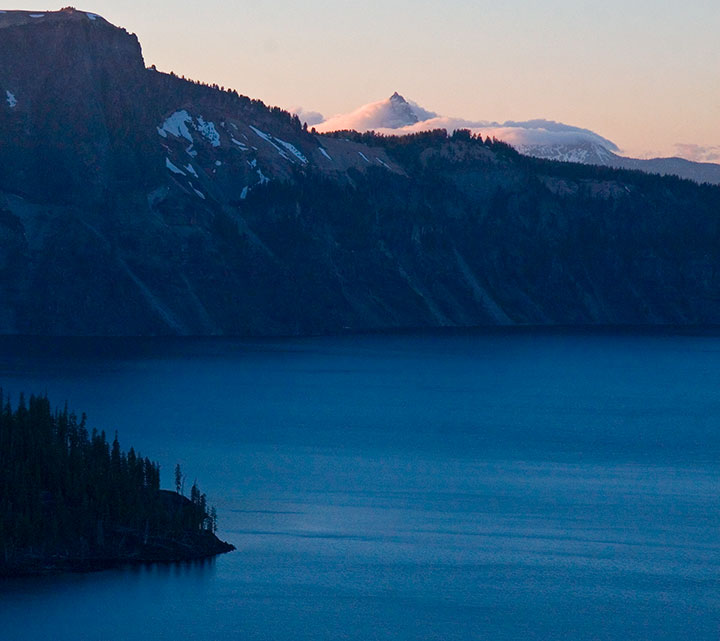
Five thousand smiles.
May 30th, 2010
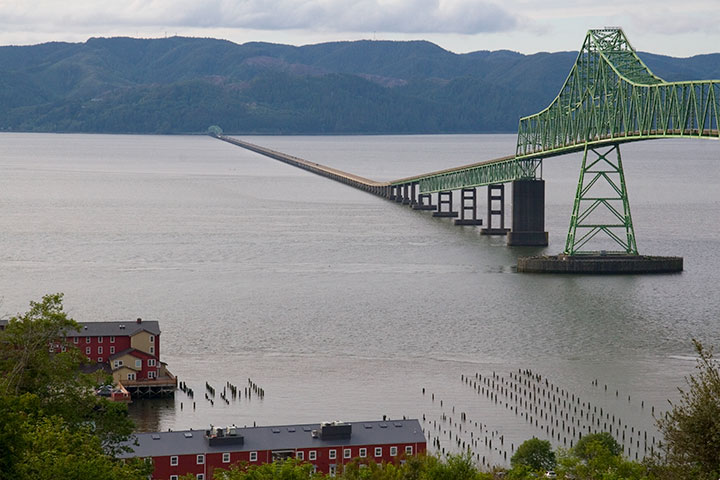
The Tailor and I had some errands to run in Portland yesterday, and since the the rain that has been pounding us for two weeks was finally starting to give way to sun, we decided to take the long way home, along the winding coastal road.
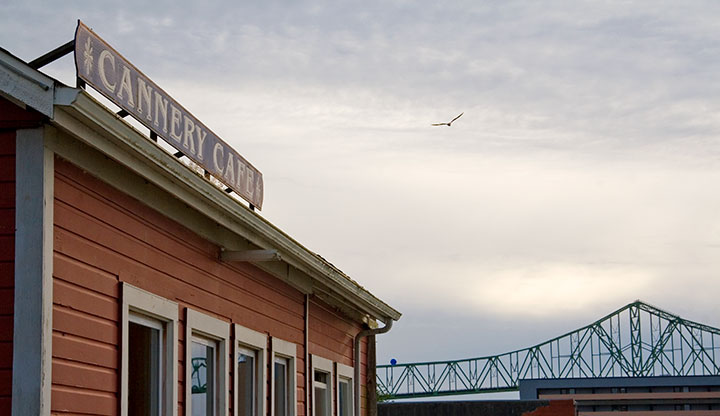
We stopped for clam chowder in Astoria, Oregon—a historic hill town (and one of the oldest settlements in the Pacific Northwest) perched above the mouth of the Columbia River. Beautiful views and Victorian houses aside, the really fun thing to do in Astoria is to look for the locations used in films like Short Circuit, Kindergarten Cop (it’s not a too-muh!), and The Goonies.
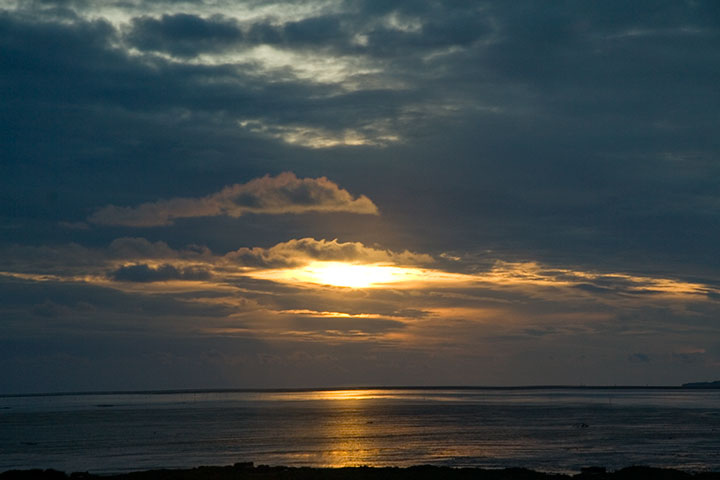
We meandered through a few neighborhood streets and an antique shop on the main drag, but as we had several hours to drive yet, and since the sun was setting in earnest by the time we finished dinner, there wasn’t time to play movie tourist. But as we walked back to the car, we saw a theatre marquee announcing that next weekend, Astoria would have a celebration honoring the 25th anniversary of The Goonies!
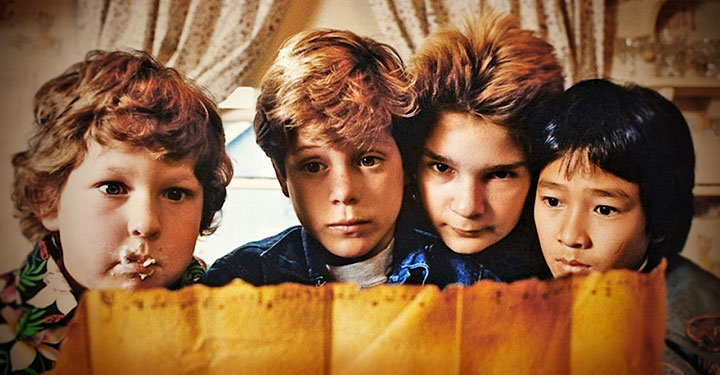
After a few depressing moments where we realized how old that made us feel, and that we had uncancellable plans for next weekend (though if you want Corey Feldman’s autograph, you might want to check it out), the Tailor started getting excited.
Him: I want to watch The Goonies when we get home!
Me: We don’t have The Goonies.
Him: We’ll swing by Stadium Video!
Me: I seriously doubt they’ll still be open.
Him: What if we bought a copy on the way home? There’s got to be a Target or something between here and Tacoma.
Me: Didn’t we decide to take the back road so we’d miss all that? There’s nothing for a hundred miles!
Him: Well, yeah. C’mon, everything is closing here. Where can we go to find DVDs for sale?
Me: Hmm, if we can get to Olympia by 10:00, we might find a store that’s still open.

Well, as expected, the drive was beautiful but desolate. When we finally reached the outer suburban ring of West Olympia, it was 10:30, but since we had arrived in the land of chain stores, it was worth a try. Despite the guilt over our sudden willingness to hand our money over to corporations, we tried three big-box stores that start with a “B,” two of which that, like everything else at that hour, were shut tight. Since we still had that last shred of hippie conviction that prevented us from trying to find a Walmart, we gave up and headed for home.
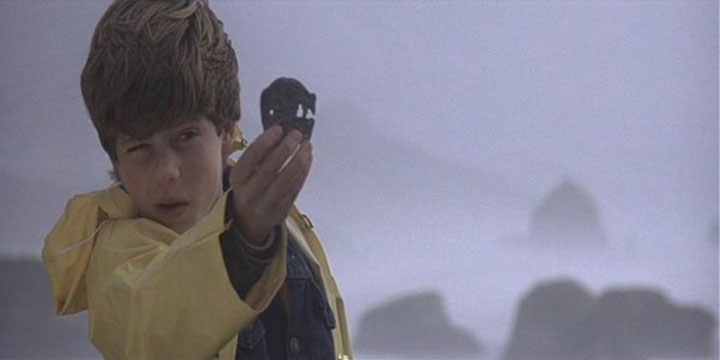
But then, just before we reached the highway again, I spotted (through my doubloon, of course) a Blockbuster Video on the left, with a neon “Open” sign in the window. I had just enough time to roll my eyes and slam on the turn signal before some instinct took over and steered the car into the parking lot. It took some digging, but buried in a corner was a miraculous, unassuming copy of The Goonies.
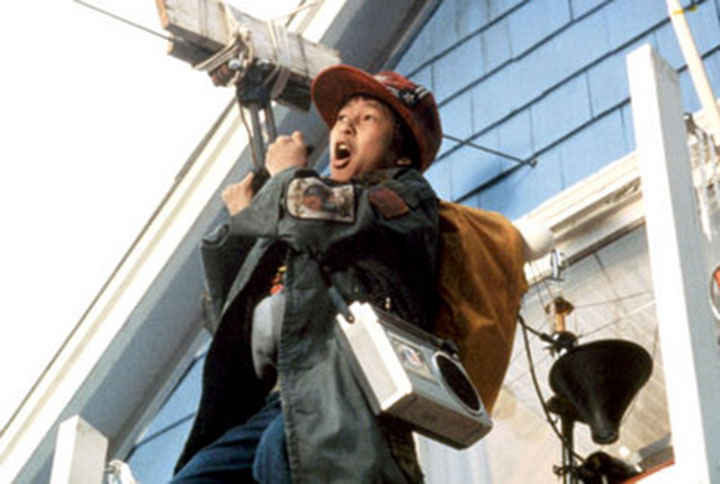
Needless to say, we stayed up way too late last night. Goonies never say die!

![Chandler O'Leary [logo]](https://chandleroleary.com/wp-content/themes/chandleroleary/images/logo.png)
































































